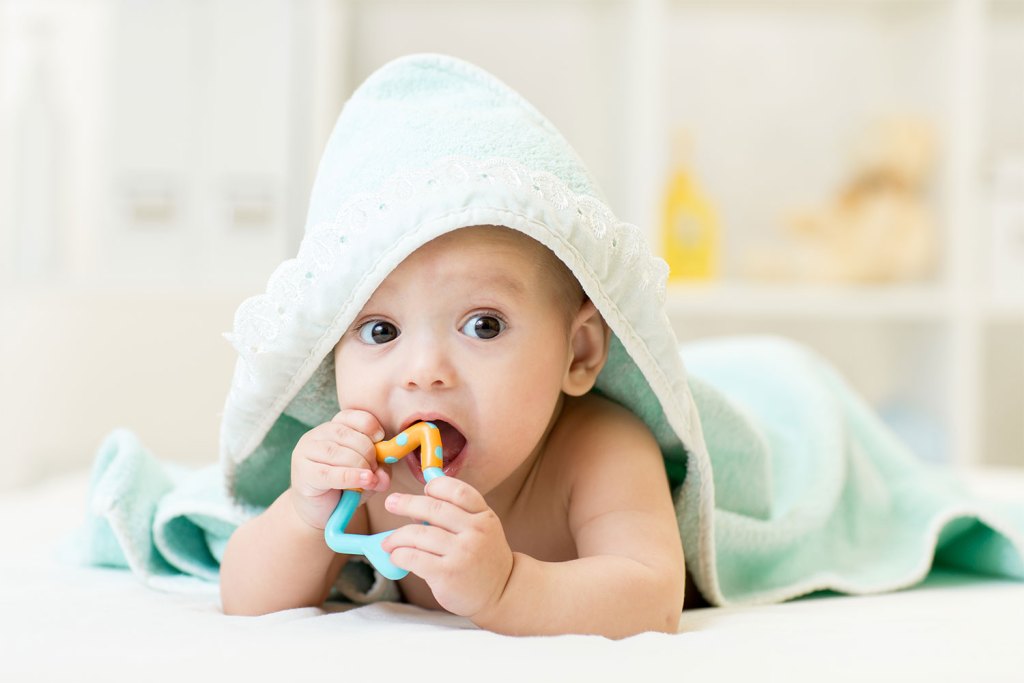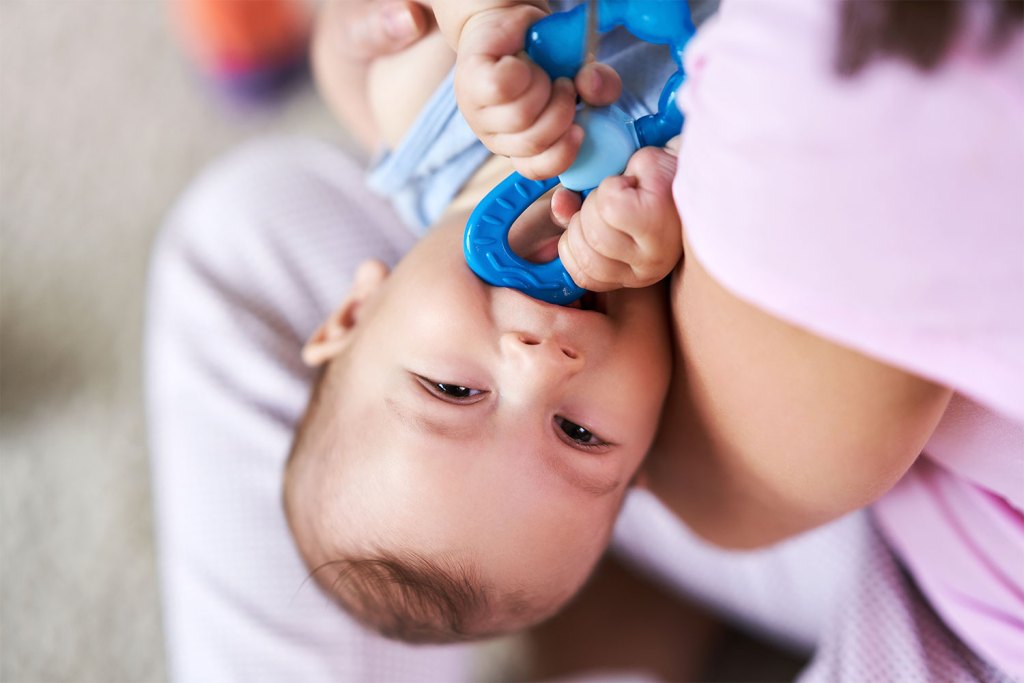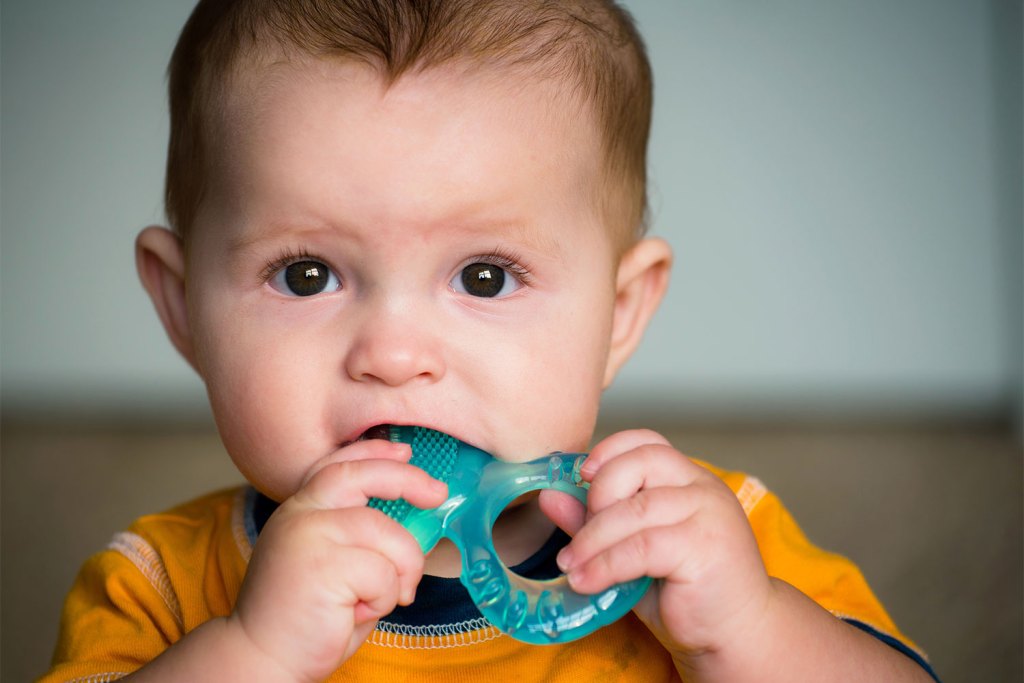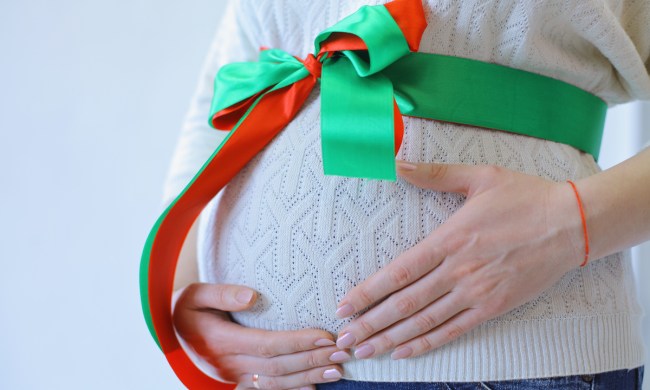Teething can be a challenging time for babies. They start teething as early as 3 months and complete their first set of teeth by around 3 years old. Classic signs of drooling include: children chewing on their clothes – besides anything that strikes their fancy, excessive drooling, and unexplained fussiness. The best teething rings will make your little one as comfortable as possible when they’re sprouting new teeth.
Frozen teething rings
The classic option is a frozen teething ring. These are usually made of a BPA-free, baby-safe plastic filled with water or gel that you can freeze or chill in your refrigerator. Additionally, textured surfaces like shallow, raised bumps provide extra comfort. Your baby can easily grasp the ring and bring it to their mouths to chew on, no matter their age. Another great thing about frozen teething rings is that they come with multiple rings in one pack. This lets you keep at least one in the refrigerator and one in use. Rotating the teething rings and washing them between uses is essential for hygienic purposes.
Note, however, that chilling seems to be the safer option, as frozen substances can potentially irritate your baby’s delicate gums, no matter how soothing the cooling sensation may be.
Best for: Smaller mouths and front teeth.
Teething rings with attached fabrics or toys
Besides teething rings, one thing you can count is a good toy. Many rings come with attached fabrics or toys that your child can play with or chew to their heart’s content. For instance, this fox-shaped cuddly teether comes with a teething ring, crinkly fabric toy, and teeth designed for chewing. It’s a 3-in-1 teething toy for around $6.

These types of teethers are good for distracting babies from their discomfort, especially in car rides or when you let them relax in their crib by themselves so you can have a few minutes to yourself. The crinkly sounds, different fabrics, and bright colors also engage your baby’s senses, which not only develops their brain but keeps their mind off of their gums. It’s a win-win!
Best for: Car rides or cribs
Interlinked or irregular-shaped teething rings
Here’s the deal: Some teething rings aren’t really rings at all. Some popular options include teething “keys” that go around a ring, which is a fun option for babies. Other top choices include collapsible silicone teething balls with textured surfaces. The intriguing shape and pieces relieve teething discomfort while being gentle on small baby hands and gums. Some babies may not take to traditional teething rings, so introducing unique shapes and textures will help you find one that they do enjoy. Trust us: It’ll save you lots of time trying to comfort an inconsolable baby, and teach your child effective self-soothing skills.
Another practical option is a teething toothbrush, complete with baby-friendly handles and bristles. Teething brushes keep your child’s gums and teeth (if some have sprouted already) squeaky-clean and are a fun way to introduce oral hygiene at an early age.
Best for: Parents looking for a multipurpose teether
Rubber teething toys
Rubber teething toys are similar to silicone, but their texture is a little different. They’re chewy but durable, which makes them great for teething toys like animal-shaped rubber teethers. Moreover, rubber toys are usually sourced from natural rubber, so they’re certified safe for teething babies. And since these toys are one continuous shape without holes or hard-to-reach surfaces, they are sometimes more hygienic than other teething toys. They won’t collect water, dirt, or spit, i.e., they save you cleaning time!

Teething toys also work as regular toys when your little one isn’t teething. With so many cute designs painted with food-grade paint, you can rest assured that your child will enjoy playing with their rubber teething toys even when they’re past the teething stage.
Best for: Toddlers
Silicone teething rings
Another popular go-to are silicone teething rings. Silicone is a vetted choice because it doesn’t contain chemicals like BPA or phthalates. Furthermore, ridged surfaces and assorted colors keep younger babies happily entertained. The ring shape is ideal for developing motor skills like grabbing smaller items, getting the ring to your mouths, and biting away!
Here’s a bonus for parents: Silicone teething rings are dishwasher-safe, so you can toss them in with your regular load for hassle-free cleaning. Luckily, many silicone rings come in sets of three or more, so you can keep the rings in rotation. Alternatively, you can keep a ring at home, in the diaper bag, and one in the car so you can be prepared at all times.
Best for: Safe choice
Extra natural alternatives to teething rings
If you prefer to use things you have around the house, good news: There many safe alternatives to traditional teething rings. One parent-approved option is a chilled cloth your baby can chew, bite, or suck on. Simply wet the fabric before placing it on a clean surface or in its own container before chilling it in the refrigerator.

Another alternative is a frozen celery stick. This yummy treat gives your baby an opportunity for practicing their chewing skills and soothes aching gums. A frozen celery might be too harsh on some, so try chilling the celery instead. Another delicious alternative is a popsicle stick that you can easily make using baby purees or sugarless fruit juices. Of course, always supervise your child when they’re eating in case they try to eat the stick, too, and let’s be honest, they probably will. But at least you and baby will get a few minutes’ worth of pain-free quality time together.
Best for: Natural alternatives or teething toys in a pinch
All of the teething rings on this list are approved safe for babies, but our thorough investigations point to silicone teething rings as the best all-around choice. They are safe, soothing, and entertaining. They can be chilled just like frozen teething rings, and can be washed in your dishwasher. Of course, you might try out different options to see what your child enjoys, but silicone teething rings are a great place to start.


